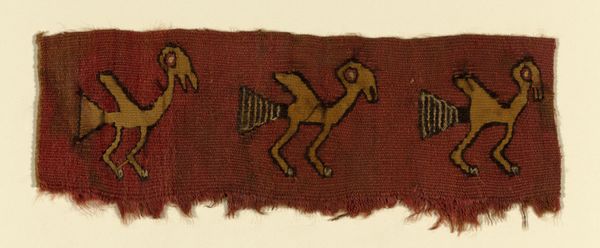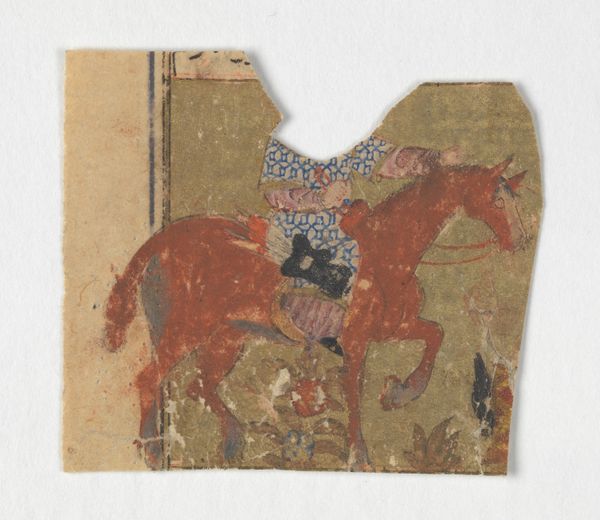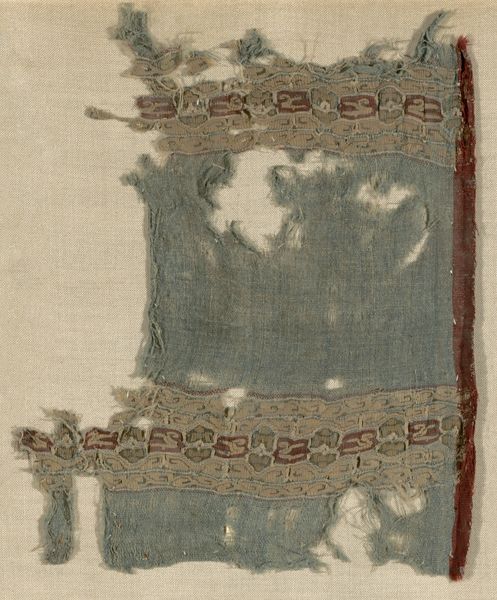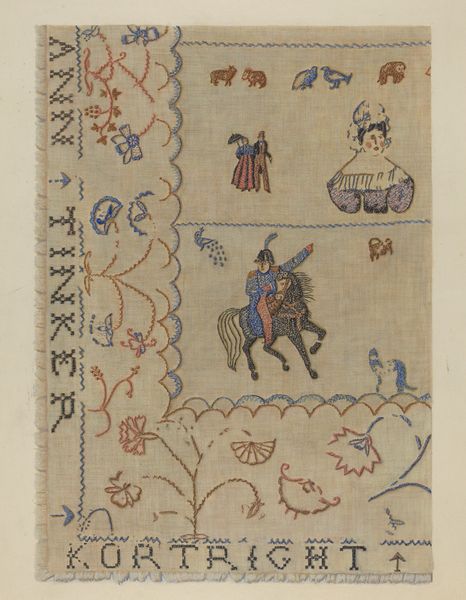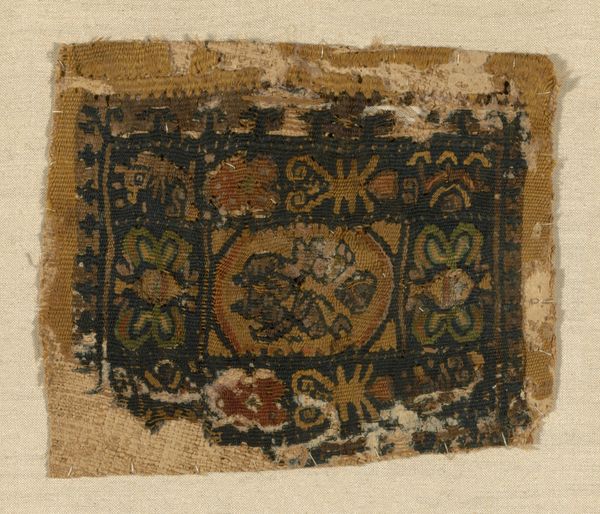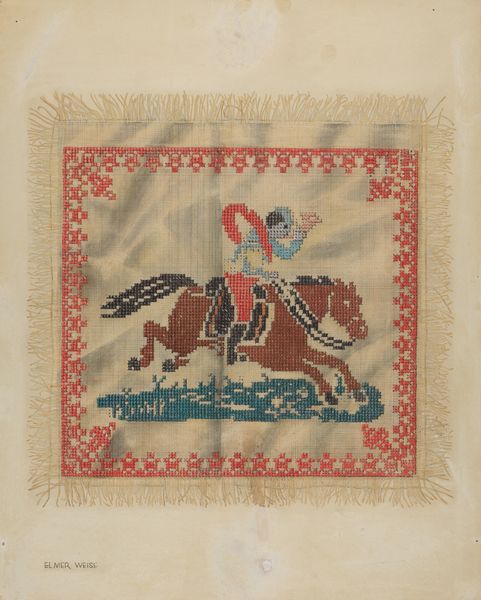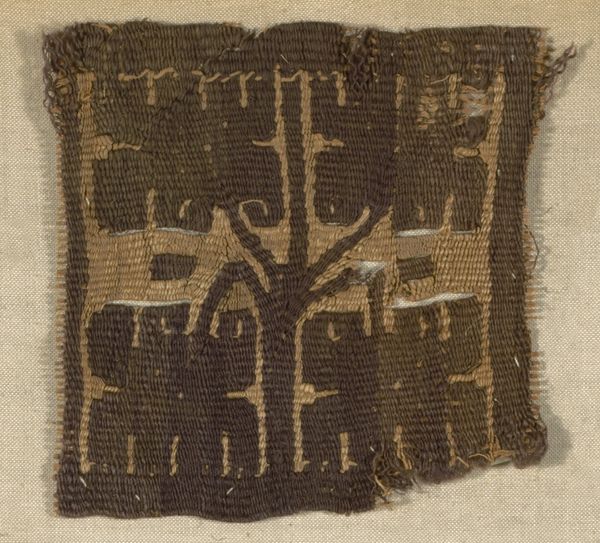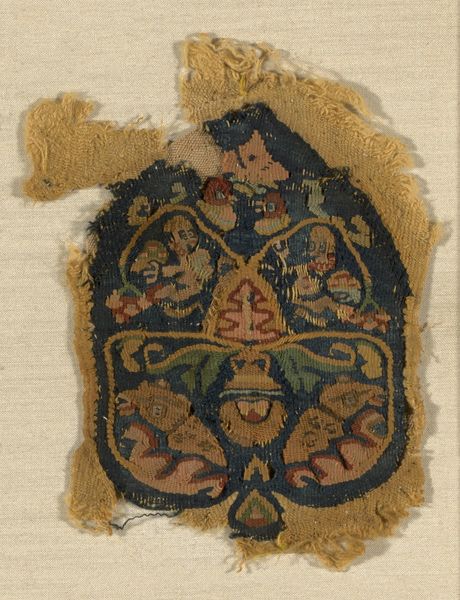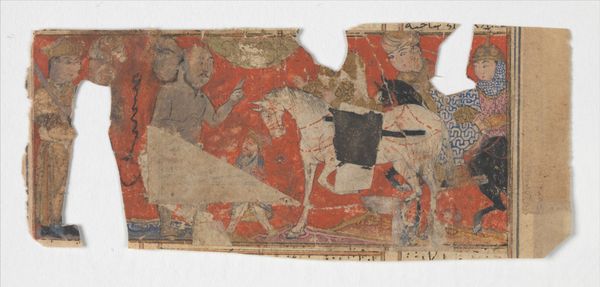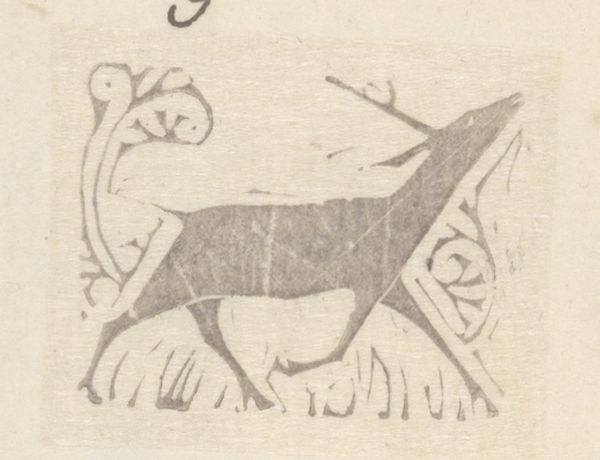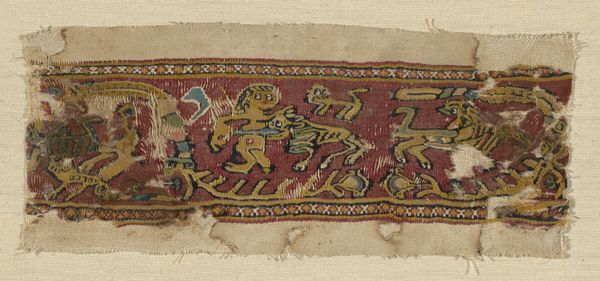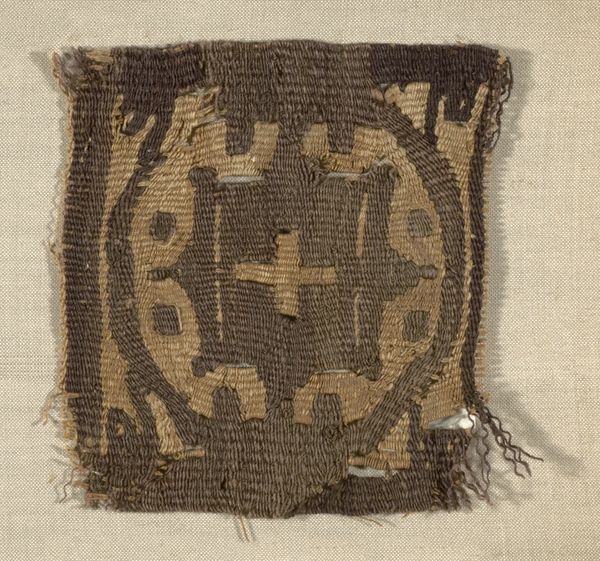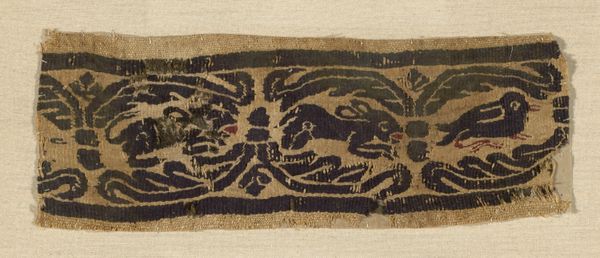
Fragment Roman period (30 B.C.– 641 A.D.)/Arab period (641–969), 6th/8th century
0:00
0:00
fibre-art, weaving, textile, wool
#
fibre-art
#
weaving
#
textile
#
ancient-egyptian-art
#
wool
#
figuration
#
ancient-mediterranean
#
yoruba-art
Dimensions: 12.7 × 9.8 cm (5 × 3 7/8 in.)
Copyright: Public Domain
This textile fragment, of unknown date, was created by a Coptic artisan. The Copts, an ethnoreligious group indigenous to North Africa, developed a distinct artistic identity, one expressed here through the stylized depiction of a horse on a deep red field. Horses, symbols of power and prestige, were significant in Coptic society, which existed at the crossroads of Egyptian, Greek, and Roman cultures. This fragment, likely part of a larger tapestry or garment, provides insight into the cultural syncretism of the time. The very act of weaving was often a domestic task, performed by women, infusing the textile with their labor and creativity. The imperfections, the wear and tear, tell a story of survival and adaptation. Consider the hands that wove this piece, the cultural milieu that shaped its creation, and the personal connection it might have held for its original owner. This fragment connects us to the lives and histories of a community that persevered through centuries of change.
Comments
No comments
Be the first to comment and join the conversation on the ultimate creative platform.
